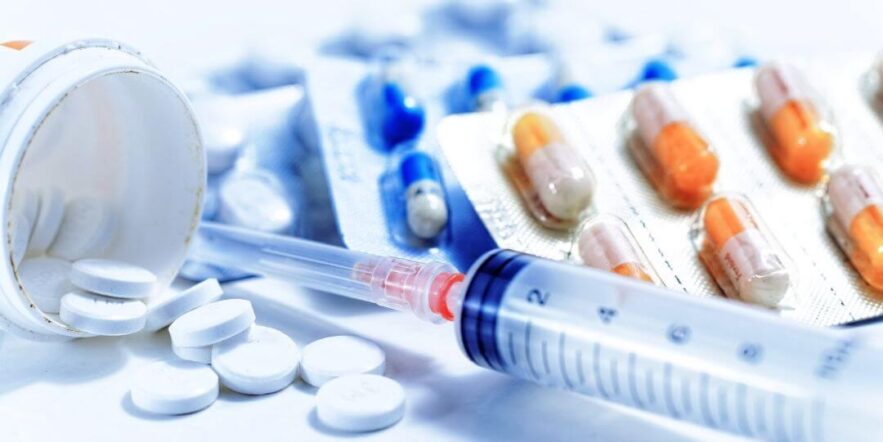If you’ve been diagnosed with type 2 diabetes, losing weight, exercising and changes in diet could be enough to keep your blood sugar in check. A combination of diet and exercise has the ability to reverse diabetes in many diabetics and pre-diabetics who are not insulin dependent — meaning if your pancreas is still producing any insulin.
Since most diabetic medicines are taken for the rest of your life, it makes sense to delay taking them as long as healthfully possible. All medicines have side effects that might impair your life and taking drugs regularly adds a strain on your liver and kidneys.
If you and your doctor decide it’s time to prescribe medication, you’ll have a lot of choices. The goal of these drugs is to help the body stimulate and use insulin more effectively and to lower blood sugar. However, different classes of these drugs achieve this goal differently. Exactly which class of drug your health care practitioner prescribes for you will depend on your individual situation, your blood glucose levels and any side effects you may experience.
Note that eventually most type 2 diabetics who depend on medicines and don’t lower their blood sugar levels through diet and exercise will stop producing insulin altogether. At this point, diet and exercise will not be able to reverse the effects of diabetes, and many type 2 diabetics will ultimately need insulin therapy (via injection) in combination with oral antidiabetic medications.
If you are faced with using medicines, you and your doctor have alot to choose from and more coming on the market each year. With so many different diabetes drugs out there, which ones are the most effective and what are the side effects associated with them?
Browse This Article
Common Names
Oral Medications: Meglitinides: Prandin and Starlix; Sulfonylureas: Amaryl and Glucotrol; Biguanides: metformin, Glumetza and Glucophage; Thiazolidinediones: Actos and Avandia; SGLT-2 Inhibitors: Invokana, Farxiga and Jardiance; DPP-4 Inhibitors: Januvia (sitagliptin), Onglyza (saxagliptin) Tradjenta (linagliptin), Nesina (alogliptin)
Injectable Medications: GLP-1 Receptor Agonists: Byetta/Bydureon, Victoza and Trulicity; Amylin Mimetics: Symlin.
Insulins: Rapid Acting: NuvoLog, Apidra and Humalog; Long Acting: Tresiba, Levemir, Lantus, Toujeo
Side Effects and What to Do About Them
Since there are so many types of diabetes meds, it’s best to discuss side effects for each drug classification.
Prandin and Starlix (Meglitinides) tend to work quickly and don’t stay in the body long, which is why they are usually taken right before or during meals. However, they can lead to low blood sugar (hypoglycemia), weight gain, nausea, back pain and headache.
Drug interactions: Meglitinides may interact with antifungals as well as some antibiotics such as erythromycin, which can result in hypoglycemia. Calcium channel blockers (a class of high blood pressure drugs), corticosteroids, diuretics and thyroid drugs may cause hyperglycemia.
Amaryl and Glucotrol (Sulfonylureas) work by stimulating the production of insulin. They have been around for a while, so they are relatively inexpensive. However, hypoglycemia, anemia, dizziness, drowsiness, weight gain, nausea, skin rash and headache are all possible side effects.
Metformin, Glumetza and Glucophage (Biguanides) are not associated with a risk of hypoglycemia, unlike other types of oral meds. However, they can lead to nausea, diarrhea, a buildup of lactic acid, weight loss and may leave a metallic taste in the mouth.
Drug interactions: With biguanides, patients should avoid certain antibiotics (trimethoprim or vancomycin), diuretics (amiloride and furosemide), gastrointestinal/acid reflux medications (cimetidine and ranitidine), and heart medications (digoxin). Morphine, the antimalaria drug quinine and the blood thinner warfarin, a blood thinner, should be avoided. Limiting alcohol consumption is also a must.
Avandia and Actos (Thiazolidinediones) have had a troubled history due to a risk of heart failure or heart attacks associated with them. In 2007, the FDA slapped a “black box” warning –- the most stringent it can require –- about the increased risk for heart attacks on the drugs and later put limitations on their sale. However, in 2013, citing new evidence, the FDA reversed course and had the warning removed from the labeling of Avandia. The labeling on Actos still contains the warning. Other side effects are respiratory problems, stroke, liver disease, bone fractures, fluid retention, abdominal pain, blurred vision, dry mouth, increased urination. Actos may also increase the risk for bladder cancer.
Drug interactions: Beta blockers (used for people at risk of heart failure) should be avoided in people taking thiazolidinediones. The drug class may also interfere with the effectiveness of ibuprofen and anticoagulants such as warfarin, and can also raise side effects. Those with asthma or COPD (chronic obstructive pulmonary disease) should also avoid thiazolidinediones. For SGLT-2s, they should be avoided in people with ketoacidosis.
Invokana, Farxiga and Jardiance (SGLT-2 Inhibitors) are among the newer oral diabetes meds on the market. This group of drugs works to lower blood sugar by using the kidneys to remove sugar from the body through urine. They can be taken alone or with metformin, and are only approved for type 2 diabetes.
Drug interactions: While patients on these medications may benefit from declines in blood pressure, body weight, and body mass, the FDA has warned that these medications may lead to ketoacidosis, a condition in which the body doesn’t produce insulin resulting in high levels of blood acids called ketones. This can quickly affect your liver and kidneys and needs emergency attention. Symptoms of ketoacidosis include difficulty breathing, nausea, vomiting, abdominal pain, confusion, and unusual fatigue or sleepiness. For obvious reasons, SGLT-2s are not recommended for those with kidney disease. Also, pregnant women or nursing mothers should weigh the risks and benefits of taking these relatively new oral drugs.
Januvia, Onglyza, Tradjenta, Nesina (DPP-4 Inhibitors). Last year, the FDA mandated the manufacturers of DPP-4 inhibitors update labeling amid reports of people experiencing severe joint pain after taking the drugs. Those patients started experiencing joint pain anywhere from a day after to several years after starting therapy. And in April of this year, the FDA updated the labeling of Onglyza and Nesina to reflect an increased risk of heart failure, especially those with heart or kidney disease. Several DPP-4s (Janumet, Jentadueto, Kazano) are sold as combination pills with metformin, so note the side effects of metformin as well if you take one of these.
Byetta/Bydureon, Victoza and Trulicity (GLP-1 Receptor Agonists) have been popular due to claims that they also lead to weight loss. However, they have been associated with nausea or vomiting, headache, dizziness, kidney damage or failure (in rare cases), and thyroid tumors in animal studies. Those with a personal or family history of thyroid cancer should avoid this class.
Drug interactions: Taking GLP-1s with other oral diabetic meds may lead to hypoglycemia. This class may also inhibit the absorption of other drugs such as lithium, some seizure medication and the hypertension drug dioxin.
Symlin (Amylin Mimetics), which works by slowing down the movement of food through the stomach, and also prevents the liver from releasing stored glucose into the blood, may help to ease hunger and promote weight loss, but has possible side effects including hypoglycemia, nausea or vomiting, headache, redness and skin irritation at the injection site.
Drug interactions: Those on amylin mimetics should avoid certain drugs for gastrointestinal issues such as atropine, as they can exacerbate side effects. Taking an oral diabetic drug, an ACE inhibitor for hypertension or certain antibiotics should consult their doctor if taking them with Symlin as the combination can increase the likelihood for hypoglycemia.
NuvoLog, Apidra and Humalog are rapid-acting insulins, typically taken just before meals, can cause hypoglycemia, low blood potassium, allergic reactions and swelling hands and feet. However, these are all rare occurrences. Some people may also experience skin irritation around the injection site. If you experience skin changes, try changing injecting the insulins around different areas of the skin.
Tresiba, Levemir, Lantus and Toujeo are long-acting insulins typically taken once per day (Tresiba is an exception as it can last up to 42 hours) and should be taken at the same time every day to avoid the absence of insulin in the bloodstream, or taking them too closely together, causing hypoglycemia. Other side effects can include pain, redness or skin swelling near the injection site. Because insulin is sometimes given in combination with thiazolidinediones, this can increase the risk of fluid retention and heart failure.
Drug interactions for fast- and long-acting insulins: People taking insulins need to be careful of also taking thiazolidinediones since it may lead to hypoglycemia. Also, taking insulins in combination should be careful as it increases the risk for fluid retention and heart failure. Certain drugs may interact with insulins causing hypoglycemia. These include: ACE inhibitors and angiotensin II receptor antagonists; drugs used to lower blood pressure; the antidepressant Prozac (fluoxetine); aspirin; corticosteroids for asthma and allergies; estrogen and progesterone for hormone therapy; HIV/AIDS meds Norvir (ritonavir) and Invirase (saquinavir); and the antipsychotics Clozaril (clozapine) and Zyprexa (olanzapine).
Effectiveness and Method of Action
Meglitinides: They tend to work quickly and don’t stay for a long time in the body as they are taken right before a meal. They increase insulin production for 4 hours.
Sulfonylureas: These are among the cheapest diabetes drugs and are their efficacy is well known to bring down blood glucose level. This class stimulates the release of insulin into the bloodstream.
Biguanides: One of their major benefits is that unlike other classes of diabetes meds, they do not tend to cause hypoglycemia They work by inhibiting the release of glucose from the liver and improve sensitivity to insulin.
Thiazolidinediones: Due to the controversy surrounding heart risks of Avandia and Actos, they are avoided by many doctors. This class increases insulin sensitivity in the muscles and the liver.
SGLT-2 inhibitors: Some studies have indicated that besides lowering blood sugar, these medications may also increase HDL or “good” cholesterol. Some people also experience declines in blood pressure and weight. SGLT-2 inhibitors work by causing the kidneys to remove sugar from the body through urine.
DPP-4 Inhibitors: DPP-4s work to suppress the activity of hormones in the gut known as incretins. Incretins are beneficial since they cause the pancreas to produce more insulin and the liver to halt production of glucose. By blocking the DPP-4 enzyme that inactivates incretins, more incretins are available to keep your blood sugar in check.
Amylin Mimetics: They have the additional benefits of promoting weight loss and may also ease hunger pains. They slow down the movement of food through the stomach and help prevent the liver from releasing stored glucose into the blood.
Incretin Mimetics: These also have the benefit of modest weight loss, and are commonly used in combination with metformin and sulfonylurea. They stimulate the release of insulin.
Insulins: Because the pancreas of diabetics can’t produce enough insulin, insulin injections replace this important function. They are the standard of care for diabetes treatments. While traditional insulins are typically taken right before meals, newer, long-acting insulins provide similar effectiveness (though they take a longer time to start working in the body) and are only taken once per day. The downside of them is that they are much more expensive than traditional insulin.
Alternatives to Diabetes Meds
Type 2 diabetes progress can often be slowed or stopped with changes in diet and increases in exercise. Check-in with your doctor as you improve your diet and exercise since weight loss might result in less medication needed.
There are many supplements that have anecdotal evidence that they promote lower blood sugar, but studies on them have not conclusively proven the effectiveness of any of them. Some of them include chromium, ginseng, magnesium, vanadium and CoQ10. A 2012 review of studies on cinnamon found that it had a possibly beneficial effect on reducing glycemic levels. Make sure your doctor knows if you take any supplements or herbal medicines. They could interact and either increase or decrease the effectiveness of any other medicines you are taking.
What Worked For You?
Would you like to share your experience with diabetes? See our guidelines for writing your own article in Tell Your Story






